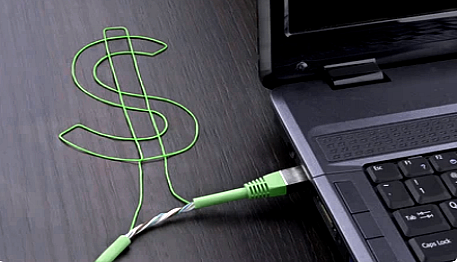Accredited InvestorsAltcoinAnatoli UnitskyAnti-Money Laundering (AML) In CryptoAPIArbitrageArtCoin TokenArticle DirectoryASICAuction Terminology GlossaryBasics of Stock Market InvestingBear MarketBest Crypto Payment Provider In the WorldBitcoinBlockchainBlockchain ConfirmationBlockchain Consensus MechanismBlockchain ForkBlockchain GlossaryBored Ape Yacht ClubBuild a Business That OutperformsBull MarketBuying SkyWay SharesByzantine Fault Tolerance (BFT) ExplainedCasascius CoinCentral Bank Digital Currency (CBDC)Centralized Crypto ExchangeCoinCoinsetCold WalletCollateralCommodity Futures Trading Commission (CFTC)Cross-Chain TechnologyCRUCrypto ExchangeCrypto GlossaryCrypto JokesCrypto Terms to KnowCrypto TickerCryptocurrencyCryptographyCryptojackingCryptounit BlockchainCryptounit GlossaryCryptounit ProgramdApp (Decentralized Application)Dead CoinDecentralized Exchange (DEX)Decentralized Finance (DeFi)Difference Between Bitcoin and EthereumDifferent Ways of Investing MoneyDigital CurrencyDistributed LedgerDo Your Own Research (DYOR)Dollar Cost Averaging (DCA)Dow Jones Industrial Average (DJIA)EncryptionERC-20ERC-721EthereumEvoScentFear Of Missing Out (FOMO)Fear, Uncertainty and Doubt (FUD)Fiat MoneyFNT Fintech CompanyGenesis BlockGlobal Unit PayGlossary of Banking TermsGlossary of Business TermsGlossary of Financial TermsHalvingHODLHot WalletHow Do I Start InvestingHow Rich is Satoshi Nakamoto?How to Create a BlockchainHow to Find Private InvestorsHow to Get Into FintechHow to Program Smart ContractsI Am Thrilled to Be a Part of This Global ProjectInitial Coin Offering (ICO)Initial Public Offering (IPO)Initial Token Offering (ITO)Innovation Basalt TechnologyInnovative Transportation TechnologiesInternational Bank Account Number (IBAN)Investing in Gold Mining StocksInvesting in Gold MiningJagerJoy of Missing Out (JOMO)Know Your Customer (KYC)LedgerLiquidity in CryptocurrencyMaker and Taker Fees in Crypto TradingMarket Capitalization (Market Cap)Meme CoinMetal Credit CardMetaMaskMillenials Now Have Access to Generational WealthMy Best Investment EverNew Digital EvolutionNFT GlossaryOff-Chain TransactionsOn-Chain TransactionsOpen Edition NFTPeer-to-Peer (P2P)Personal Loan GlossaryProbably the Best STO on the MarketProof of Stake (PoS)Real Estate Glossary of TermsReal Estate Investing GlossaryRebase TokenSecurities and Exchange Commission (SEC)Security Token ExchangesSecurity Token Offering (STO)Soulbound Decentralized Identities for Security TokensSoulbound ID Launch by Stobox Proves a SuccessSoulbound TokensStoboxStock Market GlossaryTestimonialsTether Platform and Token (USDT)UnitEx ExchangeUnitsky String TechnologiesUNTBUSDUValidatorWe Started Investing When We Were 25What are Blue Chip NFT?What are Blue Chip Stocks?What are Crypto Assets?What are Crypto Smart Contracts?What are CryptoPunks NFT?What are Digital Assets?What are Digital Collectibles?What are Gas Fees?What are Gas Wars?What are Hashmasks?What are Non Fungible Tokens?What are Non-Sufficient Funds (NSF)?What are Soulbound Tokens (SBT)?What are Stablecoins in Crypto?What are Transactions Per Second (TPS)?What are Utility NFTs?What are Utility Tokens?What Does Burning Crypto Mean?What Does Diamond Hands Mean?What Does Paper Hands Mean?What Does To The Moon Mean?What Does WAGMI Mean?What Happened to Satoshi Nakamoto?What is a 51% Attack?What is a Baby Boomer?What is a Backlink?What is a Banner?What is a Barcode?What is a Bid-Ask Spread in Crypto?What is a Block in Blockchain?What is a Block Reward?What is a Blockchain Address?What is a Blockchain Node?What is a Blockchain Oracle?What is a Blog?What is a Bond?What is a Bot?What is a Broker?What is a Business Accelerator?What is a Cash Cow?What is a Commercial Bank?What is a Commodity?What is a Con?What is a Credit?What is a Credit Limit?What is a Credit Rating?What is a Crypto Airdrop?What is a Crypto Bridge?What is a Crypto Scam?What is a Crypto Token?What is a Crypto Wallet?What is a Crypto Whale?What is a Crypto Winter?What is a Cryptocurrency Public Ledger?What is a Cryptocurrency Roadmap?What is a DAO?What is a Dark Pool?What is a Day Trader?What is a Dead Cat Bounce?What is a Default?What is a Derivative?What is a Digital Credit Card?What is a Fiscal Quarter?What is a Fungible Token?What is a Governance Token?What is a Grace Period?What is a Hard Fork?What is a Hot Wallet?What is a Hybrid Blockchain?What is a Hybrid PoW/PoS?What is a Joint Account?What is a Market Cap?What is a Merkle Tree in Blockchain?What is a Mining Farm?What is a Nonce? What is a PFP NFT?What is a POS System?What is a Prepaid Card?What is a Private Blockchain?What is a Private Key?What is a Public Blockchain?What is a Public Key?What is a Reserve Currency?What is a Ring Signature?What is a Routing Number?What is a Rug Pull in Crypto?What is a Safe Deposit Box?What is a Satoshi?What is a Security Token?What is a Seed Phrase?What is a Shitcoin?What is a Sidechain?What is a Soft Fork?What is a Spot Market?What is a State Bank?What is a SWIFT Code?What is a Tax Identification Number (TIN)?What is a Time Deposit?What is a Transaction Account?What is a Variable Interest Rate?What is a Virtual Assistant (VA)?What is a Virtual Card?What is a Virtual Currency?What is a Visa Card?What is a Whitelist in Crypto?What is a Whitepaper?What is Accounts Payable (AP)?What is AMA in Crypto?What is Amortization?What is an Accrual?What is an ACH Transfer?What is an Actuary?What is an Addendum?What is an Algorithm?What is an Angel Investor?What is an Annuity?What is an Asset?What is an ATM?What is an Atomic Swap?What is an Audit?What is an Avatar?What is an EIN?What is an Embargo?What is an Entrepreneur?What is an IDO (Initial Dex Offering)?What is an Interest Rate?What is an Internet cookie?What is an Investment Bank?What is an NFT Drop?What is an NFT Floor Price?What is an Ommer Block?What is an Orphan Block?What is an Outstanding Check?What is an Overdraft?What is Artificial Intelligence (AI)?What is B2B (Business-to-Business)?What is B2G (Business-to-Government)?What is Bartering?What is Bitcoin Dominance?What is Bitcoin Pizza Day?What is Blockchain Immutability?What is Blockchain Used For?What is BRICS?What is Business-to-Consumer (B2C)?What is C2C (Customer to Customer)?What is Capitalism?What is Catfishing?What is CFD Trading?What is Check Kiting?What is Cloud Mining?What is Communism?What is Content Marketing?What is Decentralization in Blockchain?What is DeFi in Crypto?What is Delisting?What is Depreciation?What is Digital Marketing?What is Diversification?What is Double Spending?What is Dumb Money?What is Dumping?What is Earnings Per Share (EPS)?What is Economics?What is Email Marketing?What is Equity?What is Etherscan?What is Fintech?What is Foreign currency?What is Forex?What is Fundamental Analysis (FA)?What is GameFi?What is Generative Art NFT?What is Gwei?What is Hard Currency?What is Hash Rate?What is Hashing in Blockchain?What is Inflation?What is Initial Game Offering (IGO)?What is Interest?What is Interest Income?What is Mainnet?What is Mastercard?What is Metaverse in Crypto?What is Mining in Cryptocurrency?What is Minting NFT?What is Mobile Banking?What is Money Laundering?What is NFT Alpha?What is NFT Metadata?What is NFT Rarity?What is NGMI Meaning?What is Nominal Interest Rate?What is Online Banking?What is Open-End Credit?What is OpenSea NFT Marketplace?What is Personal Identification Number (PIN)?What is Play-to-Earn?What is Polygon?What is Proof of Authority (PoA)?What is Proof of Work (PoW)?What is Public Key Cryptography?What is Pump and Dump?What is Quantum Computing?What is Refinancing?What is Retail Banking?What is Ripple?What is Sharding?What is Slippage in Crypto?What is Smart Money?What is Solvency?What is Soulbound ID?What is SSL?What is Staking in Cryptocurrency?What is Technical Analysis (TA)?What is Testnet?What is the Ask Price?What is the Better Business Bureau (BBB)?What is the Bid Price?What is the Dark Web?What is the InterPlanetary File System (IPFS)?What is the Gold Standard?What is the Lightning Network?What is the Prime Rate?What is the Sandbox?What is the Secondary Market?What is the World Bank?What is Tier 1 Capital?What is Tokenomics?What is TRC-20?What is Universal Banking?What is Unspent Transaction Output (UTXO)?What is Usury?What is Volatility in Crypto?What is Wash Trading?What is Web3?What is Whisper?What is XRP?What is Zero-Knowledge Proof (ZKP)?Who is Beeple?Who is Satoshi Nakamoto?Who is Vitalik Buterin?Why Tokenization is a Safe HavenWhy You Should Try Your Hand at Trading
What is a SWIFT Code?
- Home
- Glossary of Banking Terms
- What is a SWIFT Code?
If you have ever transferred money internationally or received an international payment, you may have come across the term SWIFT code.

But what exactly is a SWIFT code, and why is it important in international banking?
What is a SWIFT Code?
A SWIFT code, also known as a Bank Identifier Code (BIC), is a unique identification code used to identify banks and financial institutions globally. It is an internationally recognized standard format used for international wire transfers and messaging between financial institutions.
The Society for Worldwide Interbank Financial Telecommunication (SWIFT) operates a secure messaging network that facilitates communication between banks and financial institutions worldwide. SWIFT codes are assigned to banks and financial institutions that are members of the SWIFT network, and they are used to identify each member institution in the network.
The format of a SWIFT code is standardized and consists of 8-11 alphanumeric characters. The first four characters represent the bank code, the next two characters represent the country code, and the following two characters represent the location code. The final three characters, known as the branch code, are optional and are used to identify a specific branch of a bank or financial institution.
Why is a SWIFT Code Important?
SWIFT codes play a crucial role in international banking because they ensure that international wire transfers and messages are sent to the correct recipient. Without a SWIFT code, international wire transfers would be impossible as there would be no standardized way to identify banks and financial institutions globally.
In addition to identifying banks and financial institutions, SWIFT codes also provide important information about the transfer, such as the currency used and the amount transferred. This information is essential for banks to process international wire transfers accurately and efficiently.
How does a SWIFT Code Work?
When a bank or financial institution initiates an international wire transfer, it includes the recipient's SWIFT code in the transaction details. The SWIFT code is used to route the transaction through the SWIFT network to the recipient's bank or financial institution.
Once the transaction reaches the recipient's bank or financial institution, the SWIFT code is used to identify the recipient and ensure that the transaction is credited to the correct account. The recipient's bank or financial institution may also use the SWIFT code to charge any fees associated with the transaction.
It is important to note that SWIFT codes are not used for domestic wire transfers within a country. In these cases, the recipient's bank or financial institution will have a unique identification code that is used to process the transfer.
How to Find a SWIFT Code?
If you need to transfer money internationally or receive an international payment, you will need to provide your bank or financial institution with your SWIFT code. To find your SWIFT code, you can check your bank statement, contact your bank or financial institution directly, or use an online SWIFT code search tool.
SWIFT codes can also be found on the SWIFT website, which maintains a global directory of all SWIFT codes. The directory is updated regularly and includes the SWIFT codes of all banks and financial institutions that are members of the SWIFT network.
Is a SWIFT Code the Same as an IBAN?
No, a SWIFT code and an IBAN are not the same thing, although they are both used in international banking.
While a SWIFT code is used to identify banks and financial institutions, an IBAN is used to identify bank accounts. Both are essential for international wire transfers, but they serve different purposes. Some countries may require both a SWIFT code and an IBAN for international wire transfers, while others may only require one or the other.
It's important to note that not all countries use IBANs, and some countries may have different formats for bank account numbers. If you're unsure whether you need a SWIFT code or an IBAN for an international wire transfer, it's best to check with your bank or financial institution for guidance.
The Bottom Line
A SWIFT code is a unique identification code used to identify banks and financial institutions globally. It is an internationally recognized standard format used for international wire transfers and messaging between financial institutions.
SWIFT codes play a crucial role in international banking as they ensure that international wire transfers and messages are sent to the correct recipient. Without a SWIFT code, international wire transfers would be impossible as there would be no standardized way to identify banks and financial institutions globally.
Related Articles

What is an ACH Transfer?
The main difference between ACH and SWIFT is that ACH is utilized for payments within the United States, whereas SWIFT is an international payment system used by

What is SEPA?
If you need to send money in a different currency, then the SWIFT transfer process will be used.

What is a Wire Transfer?
In some countries, a similar system exists, such as the SWIFT code, which is used to identify banks globally.

International Bank Account Number (IBAN)
There are two internationally recognized methods for identifying bank accounts during cross-border transfers: the International Bank Account Number (IBAN) and the Society for Worldwide Interbank Financial Telecommunication (SWIFT) code.
- Home
- Glossary of Banking Terms
- What is a SWIFT Code?